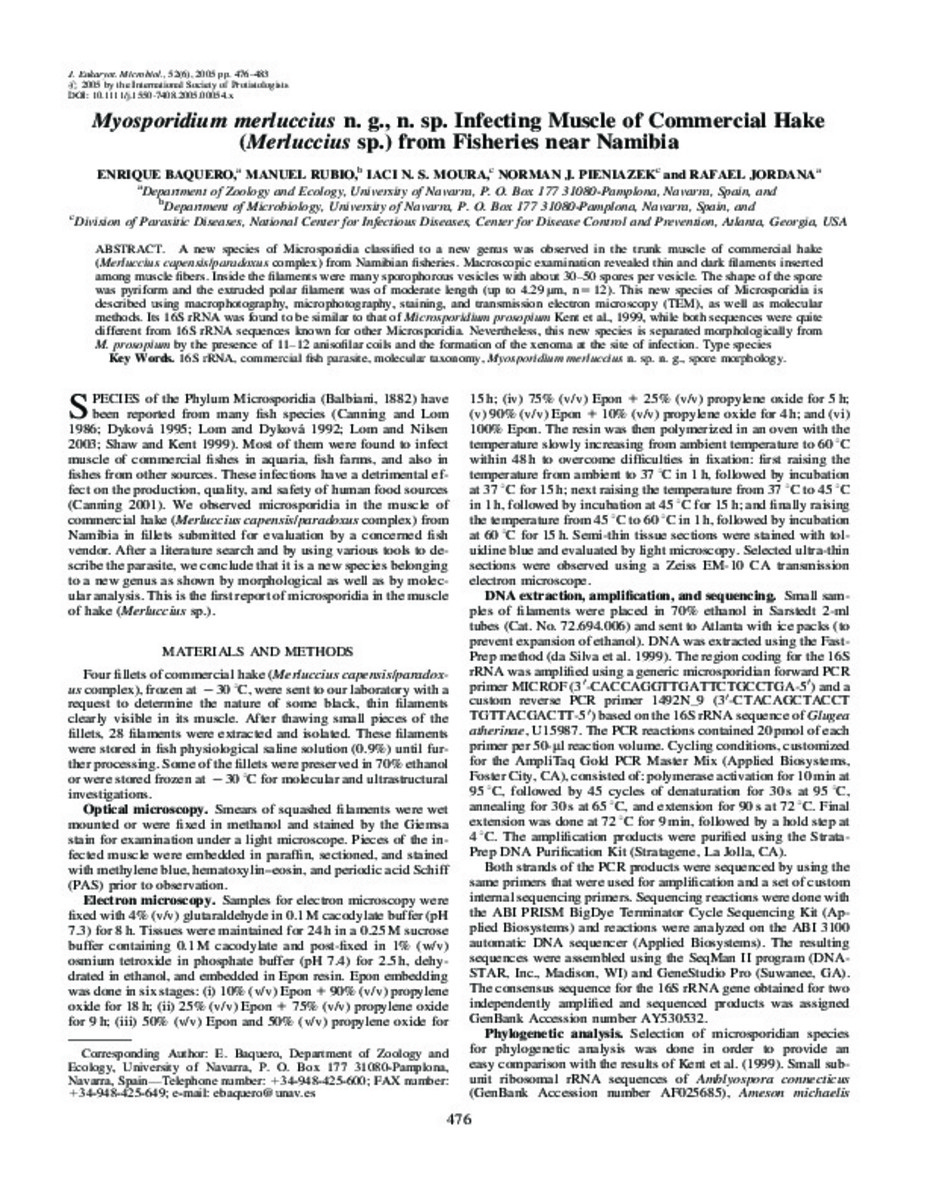Myosporidium merluccius n. g., n. sp. Infecting Muscle of Commercial Hake (Merluccius sp.) from Fisheries near Namibia
Keywords:
Materias Investigacion::Ciencias de la vida::Zoología
16S rRNA
Commercial fish parasite
Molecular taxonomy
Myosporidium merluccius n. sp. n. g.
Spore morphology
Publisher:
Blackwell Publishing Inc.; International Society of Protistologists
Citation:
Baquero E, Rubio M, Moura I, Pieniazek N, Jordana R. Myosporidium merluccius n. g., n. sp infecting muscle of commercial hake (Merluccius sp.) from fisheries near Namibia. J Eukaryot Microbiol 2005 NOV-DEC;52(6):476-483.
Statistics and impact
0 citas en

Items in Dadun are protected by copyright, with all rights reserved, unless otherwise indicated.










